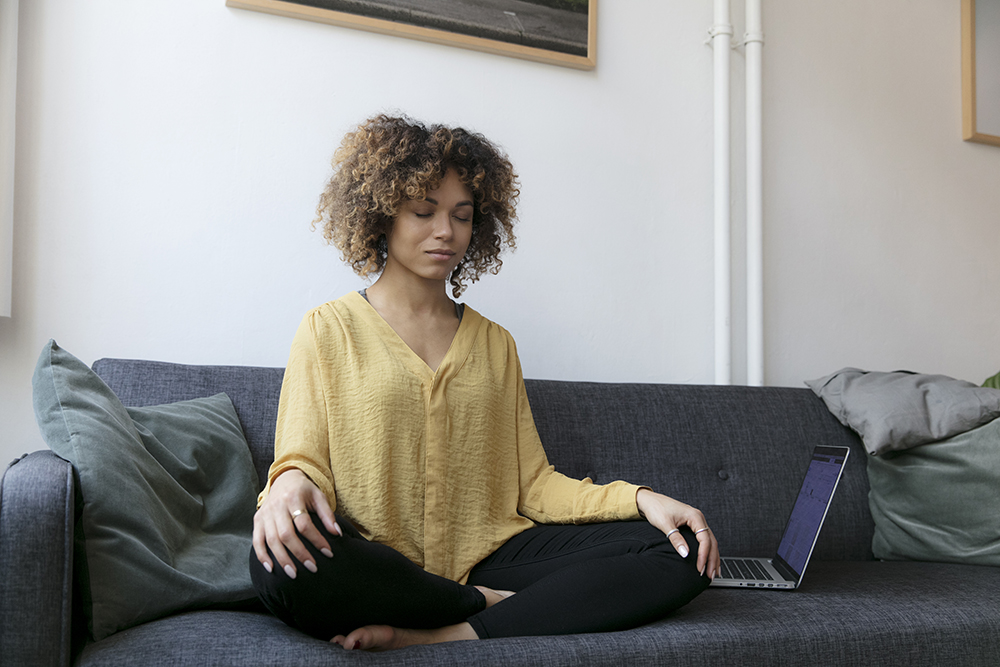[ad_1]
Should you return to the office or not? That is the question many are facing as COVID-19 continues to be a public health concern and more employers are reevaluating office arrangements. Large-scale companies such as Google, Apple and Starbucks pushed back their return to office plans and a Gartner poll conducted in August revealed that two-thirds of organizations are delaying the reopening of their sites due to new COVID-19 concerns.
With all this ambiguity and hesitation, many employees are continually refining workspaces that blur the lines between home, career, life and family. And, while working from home can be advantageous for many people, it can also create unique mental and physical health challenges, particularly for those who end up spending more time sitting, streaming and snacking.
Fortunately, there are ways you can protect your mental and physical health while working from home—it just takes a little extra planning, communication and discipline.
Creating a healthy work-from-home approach is not only about designing a productive and positive environment that supports your work. It’s also about finding ways to deal with the inevitable stress that comes with this new way of working.
Whether you’ve been working from home since March 2020 and will continue for the foreseeable future, or you’re in a hybrid home/office situation, consider using these tips to help prevent some of the stress that comes with always being just steps away from your workspace.
-
- Create a schedule. The benefit of working in an office is the physical delineation between working and home life and socialization with colleagues. Putting a schedule in place that has clear start and stop times and includes breaks for food, exercise and connection can help you avoid burnout and feeling isolated.
-
- Establish boundaries and communicate them. With a schedule comes the inevitable task of establishing boundaries with coworkers, family and others who demand your time and attention. Keep in mind, however, that boundaries without communication can lead to misunderstandings, confusion and frustration. Be sure to communicate with the important people in your life what your work and life boundaries are and how and when you will be available to them and meet your commitments.
-
- Take wellness breaks. Often overlooked in a work-from-home arrangement is physical and mental wellness. For many, the routine is wake up, caffeinate, work, dinner, sleep, repeat. Taking wellness breaks throughout the day, however, is as important as any meeting or other obligation. Schedule time for fresh air, movement and hydration. Once per hour, step away from your devices and do something for yourself. Walk the dog, stretch, refill your water bottle, meditate, etc. These breaks from work can help revive your energy, focus and creativity.
Regardless of your work situation, stress inevitably crops up. Here are three strategies that can help you cope with and conquer stress and ultimately protect your mind and body.
-
- Breathing exercises like box breathing can help increase feelings of calm, reduce stress and improve concentration. Performed regularly, deep breathing may also help reduce feelings of anxiety and depression.
-
- When in a stressful situation, get up and get moving. It doesn’t have to be an hour-long cardio session. Simple, low-impact options that don’t require equipment or even a change of clothing include walking outdoors, yoga flow and dancing. Check out the five-minute mood-boosting workout below.
-
- Stress eating is a very real thing, especially during a pandemic. When you want to stress eat, nourish your mind and your body by choosing a soothing meditation followed by a calming food or beverage. A quick 5- to 10-minute meditation that is uplifting and empowering followed by a cup of chamomile tea may help to reduce stress and improve your mood. Avoid alcohol and ultra-processed foods that may satisfy a craving but will leave you feeling sapped of energy and even more stressed in the end.
Most experts believe that working from home will continue to be common practice for the foreseeable future, and the stress that comes with it is likely here to stay as well. Learning how to manage your schedule, maintain your health and wellness routines, and deal with the stress that’s sure to come will not only protect your mental and physical health but also make you a better partner, parent, coworker and leader.
No equipment needed. Be sure to wear clothes that can move with you.
1-minute cardio warm-up: Dance, jumping jacks, stair climbing, etc.
30-seconds of each exercise:
-
- Body-weight squats
-
- Push-ups
-
- Alternating reverse lunges
-
- Triceps dips on step or chair
-
- Sumo squats
-
- Plank
1-minute cool-down with stretching or yoga poses
[ad_2]


